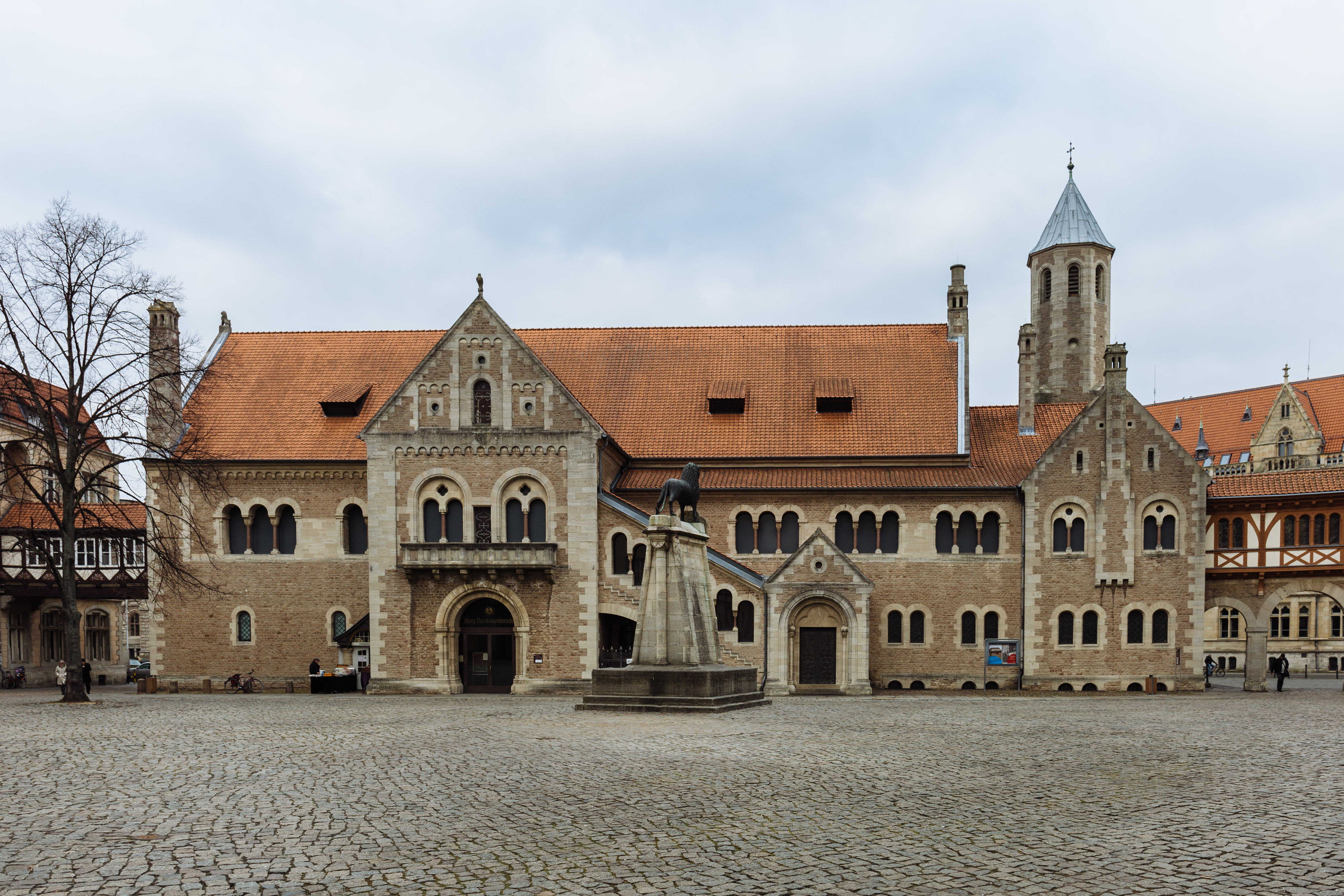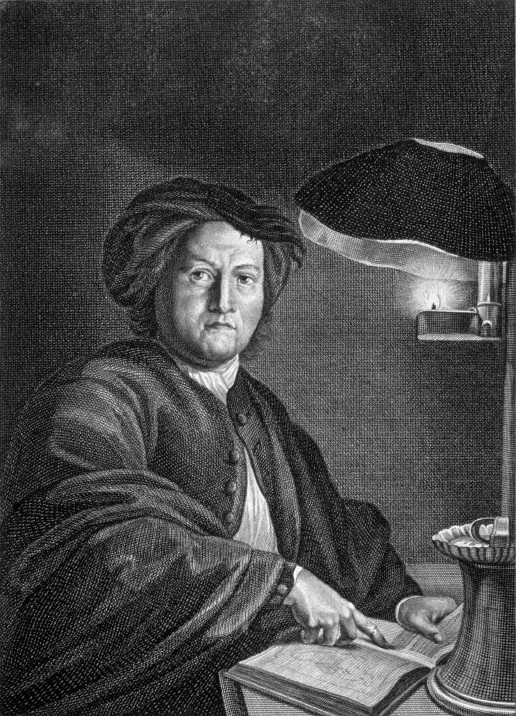|
Philipp Wilhelm Oeding
Philipp Wilhelm Oeding (born 15 January 1697 in Benzingerode and died in 1781 in Braunschweig) was a German painter who also painted miniatures. Biography Philipp Wilhelm Oeding became in 1721 a pupil of the Academy of Fine Arts Nuremberg. He studied there with Johann Daniel Preissler Johann Daniel Preissler,Also spelled Preisler or Preißler. or Preisler (1666–1737) was a notable member of a German artistic family, originating in Bohemia. His children included Johann Justin Preissler (1698–1771), Georg Martin Preisler (1 ... and acquired in 1725 Nuremberg citizenship. In 1729, he married the painter Barbara Helena Preisler, a daughter of his teacher. In 1724 Oeding moved to Altona and became Danish Court painter. In 1746, he finally became a professor in painting at the Collegium Carolinum in Braunschweig. Bibliography The present contribution is a translation of the German version of Wikipedia * Manfred H. Grieb'': Nürnberger Künstlerlexikon''. Band 3, Münc ... [...More Info...] [...Related Items...] OR: [Wikipedia] [Google] [Baidu] |
Benzingerode
Benzingerode has been a village incorporated into the borough of Wernigerode since 1 April 1993. in the district of Harz in the German state of Saxony-Anhalt. Location Benzingerode lies in the North Harz about 7 kilometres east of Wernigerode, on the old B 6 federal road that runs through the middle of the village and branches off to Silstedt at the eastern exit. Southwest of Benzingerode liest the Stapenberg. A low ridge, the Ziegenberge runs eastwards towards Heimburg on which is the site of an old hillfort A hillfort is a type of earthwork used as a fortified refuge or defended settlement, located to exploit a rise in elevation for defensive advantage. They are typically European and of the Bronze Age or Iron Age. Some were used in the post- Rom ..., the Struvenburg. References External links Benzingerode in 40 photos(dual: German/French) {{Authority control Former municipalities in Saxony-Anhalt Wernigerode Duchy of Brunswick ... [...More Info...] [...Related Items...] OR: [Wikipedia] [Google] [Baidu] |
Braunschweig
Braunschweig () or Brunswick ( , from Low German ''Brunswiek'' , Braunschweig dialect: ''Bronswiek'') is a city in Lower Saxony, Germany, north of the Harz Mountains at the farthest navigable point of the river Oker, which connects it to the North Sea via the rivers Aller and Weser. In 2016, it had a population of 250,704. A powerful and influential centre of commerce in medieval Germany, Brunswick was a member of the Hanseatic League from the 13th until the 17th century. It was the capital city of three successive states: the Principality of Brunswick-Wolfenbüttel (1269–1432, 1754–1807, and 1813–1814), the Duchy of Brunswick (1814–1918), and the Free State of Brunswick (1918–1946). Today, Brunswick is the second-largest city in Lower Saxony and a major centre of scientific research and development. History Foundation and early history The date and circumstances of the town's foundation are unknown. Tradition maintains that Brunswick was created through t ... [...More Info...] [...Related Items...] OR: [Wikipedia] [Google] [Baidu] |
Academy Of Fine Arts, Nuremberg
The Academy of Fine Arts Nuremberg (german: Akademie der Bildenden Künste Nürnberg) was founded in 1662 by Jacob von Sandrart and is the oldest art academy in German-speaking Central Europe. The art academy is situated in Nuremberg. Classes include studies in fine arts, sculpture, visual arts, painting, artistic concepts, art education, gold- and silversmithing, as well as graphic design. There are master courses in Architecture and Urban Studies, and Art and Public Space. Teaching takes place today in an ensemble of transparent pavilions that were designed by German architect Sep Ruf and have been classified as an historical monument. Located at the edge of the city, the campus offers an intensive work atmosphere. In the exhibition hall of the Academy and in the Gallery of the Academy, young artists publicly present their work. In addition to the main location in Nuremberg's Zerzabelshof district, the college has been using space in the historical imperial castle in Lauf si ... [...More Info...] [...Related Items...] OR: [Wikipedia] [Google] [Baidu] |
Johann Daniel Preissler
Johann Daniel Preissler,Also spelled Preisler or Preißler. or Preisler (1666–1737) was a notable member of a German artistic family, originating in Bohemia. His children included Johann Justin Preissler (1698–1771), Georg Martin Preisler (1700–1754), Barbara Helena Preisler (1707–1758; married to Oeding), Johan Martin Preisler (1715–1794), and Valentin Daniel Preisler (1717–1765), all in their time renowned artists. Most notable for his portraits, nudes and history paintings, Johann Daniel Preissler also produced drawings and frescoes. He was particularly known beyond his native Nuremberg for his ''Die durch Theorie erfundene Practic'' (full title: ''Die durch Theorie'' ''erfundene Practic oder Gründlich verfasste Reguln deren man sich als einer Anleitung zu berühmter Künstlere Zeichen-Wercke bestens bedienen kann''), a sequence of works on art theory – the individual works were translated into several other languages and served as textbooks for students such ... [...More Info...] [...Related Items...] OR: [Wikipedia] [Google] [Baidu] |
Barbara Helena Preisler
Barbara Helena Preißler, Preissler or Preisler, married Oeding (born 12 June 1707 in Nuremberg and died in 1758 in Braunschweig) was a German miniature painter and copper engraver, as well as creator of objects in ivory, wax and alabaster, and a poet. Biography Barbara Helena Preisler was the daughter of the master painter Johann Daniel Preisler in Nürnberg, who also taught her to paint. In 1729, she married the painter Philipp Wilhelm Oeding (1697-1781), a pupil of her father who later joined the Braunschweig Court. She made various copper etchings, mainly topographical views, as well as objects in ivory, wax and alabaster. As a poet, she was a member of the ''Pegnesischer Blumenorden'' (Pegnitz Flower Society or in latin: ''Societas Florigera ad Pegnesum''), a German literary society founded in Nuremberg in 1644 by the poet Georg Philipp Harsdörffer. She adopted the name the ''Alanturum'' flower or Elecampane Elecampane (''Inula helenium''), pronounced and also cal ... [...More Info...] [...Related Items...] OR: [Wikipedia] [Google] [Baidu] |
Altona, Hamburg
Altona (), also called Hamburg-Altona, is the westernmost urban borough (''Bezirk'') of the German city state of Hamburg, on the right bank of the Elbe river. From 1640 to 1864, Altona was under the administration of the Danish monarchy. Altona was an independent borough until 1937. In 2016 the population was 270,263. History Altona was founded in 1535 as a village of fishermen in what was then Holstein-Pinneberg. In 1640, Altona came under Danish rule as part of Holstein-Glückstadt, and in 1664 was granted municipal rights by the Danish King Frederik III, who then ruled in personal union as Duke of Holstein. Altona was one of the Danish monarchy's most important harbor towns. The railroad from Altona to Kiel, the Hamburg-Altona–Kiel railway ( da, link=no, Christian VIII Østersø Jernbane), was opened in 1844. Because of severe restrictions on the number of Jews allowed to live in Hamburg until 1864 (with the exception of 1811–1815), a major Jewish communi ... [...More Info...] [...Related Items...] OR: [Wikipedia] [Google] [Baidu] |
Collegium Carolinum In Braunschweig
A (plural ), or college, was any association in ancient Rome that acted as a legal entity. Following the passage of the ''Lex Julia'' during the reign of Julius Caesar as Consul and Dictator of the Roman Republic (49–44 BC), and their reaffirmation during the reign of Caesar Augustus as ''Princeps senatus'' and Imperator of the Roman Army (27 BC–14 AD), ''collegia'' required the approval of the Roman Senate or the Emperor in order to be authorized as legal bodies. Such associations could be civil or religious. The word literally means "society", from (‘colleague’). They functioned as social clubs or religious collectives whose members worked towards their shared interests. These shared interests encompassed a wide range of the various aspects of urban life; including political interests, cult practices, professions, trade, and civic services. The social connections fostered by ''collegia'' contributed to their influence on politics and the economy; acting as lobby ... [...More Info...] [...Related Items...] OR: [Wikipedia] [Google] [Baidu] |
1697 Births
Events January–March * January 8 – Thomas Aikenhead is hanged outside Edinburgh, becoming the last person in Great Britain to be executed for blasphemy. * January 11 – French writer Charles Perrault releases the book '' Histoires ou contes du temps passé'' (literally "Tales of Past Times", known in England as "Mother Goose tales") in Paris, a collection of popular fairy tales, including ''Cinderella'', '' Puss in Boots'', '' Red Riding Hood'', ''The Sleeping Beauty'' and ''Bluebeard''. * February 8 – The English infantry regiment of Arthur Chichester, 3rd Earl of Donegall is disbanded four years after it was first raised. * February 22 – Gerrit de Heere becomes the new Governor of Dutch Ceylon, succeeding Thomas van Rhee and administering the colony for almost six years until his death. * February 26 – Conquistador Martín de Ursúa y Arizmendi and 114 soldiers arrive at Lake Petén Itzá in what is now Guatemala and begin the Spanish conquest o ... [...More Info...] [...Related Items...] OR: [Wikipedia] [Google] [Baidu] |
1781 Deaths
Events January–March * January – William Pitt the Younger, later Prime Minister of Great Britain, enters Parliament, aged 21. * January 1 – Industrial Revolution: The Iron Bridge opens across the River Severn in England. * January 2 – Virginia passes a law ceding its western land claims, paving the way for Maryland to ratify the Articles of Confederation. * January 5 – American Revolutionary War: Richmond, Virginia is burned by British naval forces, led by Benedict Arnold. * January 6 – Battle of Jersey: British troops prevent the French from occupying Jersey in the Channel Islands. * January 17 – American Revolutionary War – Battle of Cowpens: The American Continental Army, under Daniel Morgan, decisively defeats British forces in South Carolina. * February 2 – The Articles of Confederation are ratified by Maryland, the 13th and final state to do so. * February 3 – Fourth Anglo-Dutch War &nd ... [...More Info...] [...Related Items...] OR: [Wikipedia] [Google] [Baidu] |
German Male Painters
German(s) may refer to: * Germany (of or related to) **Germania (historical use) * Germans, citizens of Germany, people of German ancestry, or native speakers of the German language ** For citizens of Germany, see also German nationality law ** Germanic peoples (Roman times) * German language **any of the Germanic languages * German cuisine, traditional foods of Germany People * German (given name) * German (surname) * Germán, a Spanish name Places * German (parish), Isle of Man * German, Albania, or Gërmej * German, Bulgaria * German, Iran * German, North Macedonia * German, New York, U.S. * Agios Germanos, Greece Other uses * German (mythology), a South Slavic mythological being * Germans (band), a Canadian rock band * "German" (song), a 2019 song by No Money Enterprise * '' The German'', a 2008 short film * " The Germans", an episode of ''Fawlty Towers'' * ''The German'', a nickname for Congolese rebel André Kisase Ngandu See also * Germanic (disambigua ... [...More Info...] [...Related Items...] OR: [Wikipedia] [Google] [Baidu] |
18th-century German Painters
The 18th century lasted from January 1, 1701 ( MDCCI) to December 31, 1800 ( MDCCC). During the 18th century, elements of Enlightenment thinking culminated in the American, French, and Haitian Revolutions. During the century, slave trading and human trafficking expanded across the shores of the Atlantic, while declining in Russia, China, and Korea. Revolutions began to challenge the legitimacy of monarchical and aristocratic power structures, including the structures and beliefs that supported slavery. The Industrial Revolution began during mid-century, leading to radical changes in human society and the environment. Western historians have occasionally defined the 18th century otherwise for the purposes of their work. For example, the "short" 18th century may be defined as 1715–1789, denoting the period of time between the death of Louis XIV of France and the start of the French Revolution, with an emphasis on directly interconnected events. To historians who expand ... [...More Info...] [...Related Items...] OR: [Wikipedia] [Google] [Baidu] |





